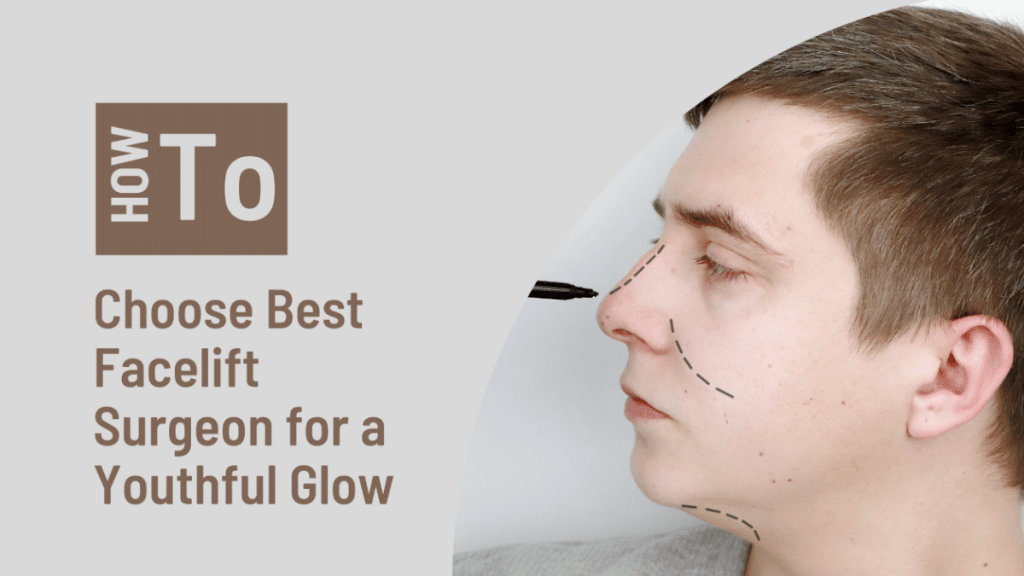Why a Facelift Surgeon Matters More Than You Think
A facelift is one of the most sought-after cosmetic procedures for those looking to rejuvenate their appearance. It’s a transformative process that can erase years from your face, boost your confidence, and restore a youthful glow. However, the success of this procedure relies heavily on the expertise and skill of your chosen facelift surgeon. Selecting the right professional ensures natural results that enhance your beauty without looking overdone.
Your surgeon’s expertise determines the precision, safety, and artistry of the procedure. A well-qualified facelift surgeon understands the intricacies of facial anatomy and employs advanced techniques to deliver harmonious results. On the other hand, an inexperienced or unqualified practitioner can lead to unsatisfactory outcomes, requiring costly revisions and prolonged recovery times.
What Sets a Facelift Surgeon Apart?
Not all cosmetic surgeons are created equal, and when it comes to facelifts, specialization is key. A skilled facelift surgeon possesses:
1. Board Certification:
Ensure that your surgeon is board-certified by a reputable organization, such as the American Board of Plastic Surgery (ABPS) or an equivalent in your country. Certification signifies that they have undergone rigorous training, adhere to ethical practices, and maintain the highest standards of care.
2. Extensive Experience:
Facelift surgery is as much an art as it is a science. Surgeons with years of experience and a focus on facelifts are better equipped to customize procedures to your unique facial structure and goals.
3. Aesthetic Eye:
The goal of a facelift isn’t just to tighten skin—it’s to rejuvenate your appearance in a way that looks natural. A skilled surgeon will have an artistic approach to balance and proportion.
4. Positive Patient Feedback:
Read reviews, testimonials, and case studies from previous patients. Before-and-after galleries can offer valuable insights into a surgeon’s capabilities and aesthetic style.
Types of Facelift Techniques to Consider
Facelift surgery has evolved significantly over the years, offering various techniques to address different needs and goals. A proficient facelift surgeon will explain these options and recommend the most suitable approach for you:
1. Traditional Facelift:
Ideal for addressing significant signs of aging, this method involves making incisions around the ears and hairline to lift and reposition the skin and underlying muscles.
2. Mini Facelift:
Designed for patients with mild to moderate sagging, this less invasive option requires smaller incisions and shorter recovery times.
3. Deep Plane Facelift:
A highly specialized technique that involves repositioning deeper layers of facial tissue for more dramatic and long-lasting results.
4. Mid-Face Lift:
Focused on rejuvenating the cheeks and under-eye area, this technique restores youthful volume and eliminates sagging in the mid-face region.
5. SMAS Facelift:
This procedure targets the superficial musculoaponeurotic system (SMAS) layer beneath the skin to create natural, enduring results.
How to Find the Right Facelift Surgeon
With so many options available, finding the perfect facelift surgeon may feel overwhelming. Here’s a step-by-step guide to streamline your search:
1. Research Thoroughly:
Start by exploring surgeons in your area who specialize in facelifts. Look for board certifications, years of experience, and a focus on facial procedures. Online directories and professional organizations can be great resources.
2. Evaluate Their Portfolio:
A surgeon’s before-and-after photos provide a glimpse into their skill and aesthetic sensibility. Pay attention to whether the results look natural and consistent across different patients.
3. Read Reviews:
Patient testimonials can reveal insights into the surgeon’s bedside manner, communication skills, and overall satisfaction rates.
4. Seek Recommendations:
If you know someone who has undergone a facelift, ask about their experience and whether they would recommend their surgeon.

The Consultation Process: What to Expect
Once you’ve shortlisted potential facelift surgeons, the next step is scheduling consultations. This meeting is your opportunity to evaluate the surgeon’s expertise and determine if they are the right fit for you. During the consultation, be prepared to discuss:
- Your aesthetic goals and concerns.
- Your medical history and any previous surgeries.
- The techniques the surgeon recommends for your case.
A reputable facelift surgeon will take the time to assess your facial structure, skin elasticity, and overall health. They will also provide honest feedback about what you can realistically achieve. Avoid surgeons who make exaggerated promises or rush you into making a decision.
Questions to Ask Your Facelift Surgeon
To ensure you’re making an informed choice, ask these important questions during your consultation:
- What is your experience with facelift procedures?
- Which facelift technique do you recommend for me and why?
- What is the recovery process like?
- Can I see before-and-after photos of previous patients?
- What are the risks and potential complications?
- Do you offer follow-up care after the surgery?
Advanced Technology in Facelift Surgery
The best facelift surgeons leverage innovative technology to enhance outcomes. For instance:
1. 3D Imaging:
This tool provides a virtual preview of your post-surgery appearance, helping you visualize results and set realistic expectations.
2. Laser-Assisted Techniques:
Lasers can be used during facelifts to minimize scarring and enhance skin tightening.
3. Endoscopic Facelifts:
These minimally invasive procedures use tiny cameras for precision, resulting in shorter recovery times and less visible scarring.
Post-Surgery Care and Long-Term Results
Recovery is a crucial phase of your facelift journey. A competent facelift surgeon will provide clear post-operative instructions to promote healing and ensure the best results. Typical aftercare measures include:
- Avoiding strenuous activities for at least two weeks.
- Keeping your head elevated to reduce swelling.
- Following a prescribed skincare routine to maintain results.
Regular follow-ups with your surgeon are essential to monitor your progress and address any concerns. Many patients find that complementary treatments, such as dermal fillers or laser skin resurfacing, can help maintain their rejuvenated look over time.
Common Mistakes to Avoid When Choosing a Surgeon
Avoid these pitfalls to ensure you select the best facelift surgeon:
1. Prioritizing Cost Over Quality:
While affordability is important, choosing the cheapest option can lead to subpar results or complications.
2. Overlooking Credentials:
Ensure the surgeon is board-certified and specializes in facelifts.
3. Falling for Gimmicks:
Beware of promises that sound too good to be true. Quality facelift results require expertise, not shortcuts.
4. Neglecting Post-Surgery Support:
Post-operative care is just as important as the surgery itself. Ensure your surgeon offers a comprehensive aftercare plan.
The Transformational Power of a Skilled Facelift Surgeon
Investing in a qualified facelift surgeon is about more than improving your appearance; it’s about enhancing your self-confidence and quality of life. Whether you’re searching for a trusted facelift surgeon near me or exploring the latest advancements in facial rejuvenation, the right professional can make all the difference. A successful facelift can make you feel more vibrant, youthful, and ready to face the world. With proper research and careful selection, you can achieve results that are as natural as they are stunning.
